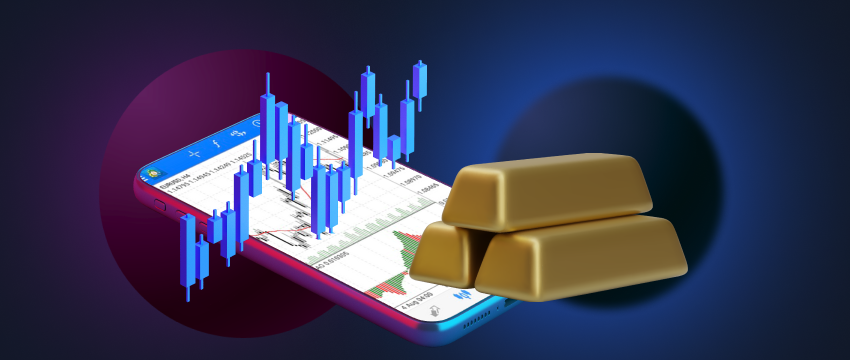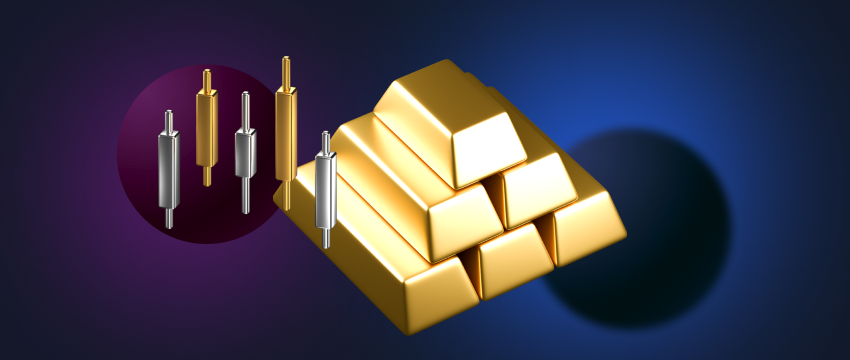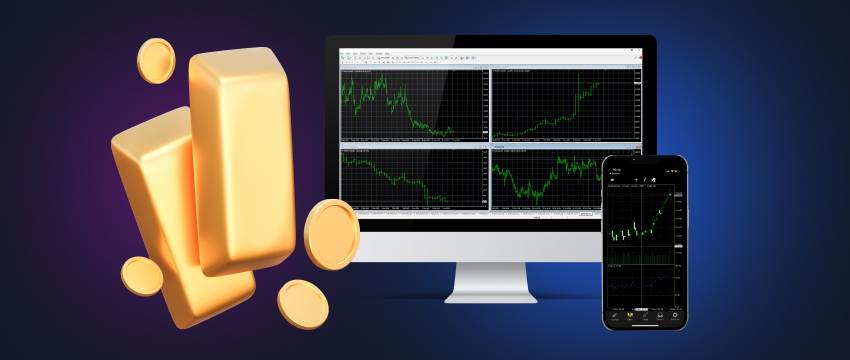Which is the best instrument for metal trading? Let’s find out…The choice of which metal is best for trading is dependent on several factors. While gold is probably the most common investment for a significant number of global traders, silver, palladium, and platinum have also become popular commodities. However, each of these metals comes with its own risk and level of volatility. This is what we’ll be looking at in this article.
Let’s start with gold
This sought-after commodity has many uses, ranging from industrial and electronic applications to jewellery manufacture and as a form of currency. The market determines gold’s value daily, and sentiment has a larger impact on its price than supply and demand. There are however other reasons that cause gold prices to fluctuate or that cause demand for this precious yellow metal to spike.
Inflation is one of the factors causing the demand for gold to increase. In a market downturn, when the return on investments like real estate, bonds, or equity, turns negative, the drive to acquire gold spikes. This is because gold is considered an asset that maintains value. Another driver for increased demand for gold is the health of a country’s economy or financial systems. If a country’s currency or banks are considered unstable, individuals often resort to gold as a reliable store of value.
Moreover, war and political upheavals can result in a heightened demand for gold due to its portability and its potential use for storing value or securing food, shelter, and safe transportation out of the region.
How does silver fare in comparison?
Price fluctuations in the silver market are typically more volatile in comparison to gold. This phenomenon occurs because silver prices are primarily driven by the perception of its value as a store of wealth and the dynamics of industrial supply and demand.
In fact, advancing technological innovations are also a driver of the price of silver because of the rise in the metal’s usage across multiple industries including telecommunications, electronics, and renewable energy. Similar to gold, silver prices are also affected by inflation and economic trends.
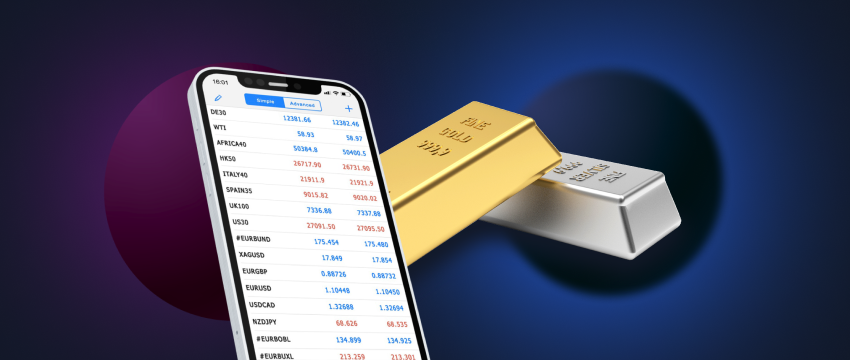
What about platinum?
Gold, silver, and platinum are subject to constant worldwide trading. However, platinum is a rarer metal, and its scarcity sees this commodity fetch a greater price per troy ounce than gold when the market and geopolitical conditions are stable. Other factors impacting platinum prices are:
- Industrial demand: platinum has several uses, but perhaps the largest demand for the metal comes from the automotive industry. This is because platinum constitutes a primary component of automotive catalysts used to minimize the impact of harmful emissions.
- Second to this is the use of platinum in jewellery manufacture. Other industries that utilise this commodity are those relating to petroleum, chemical refining, and computers.
- Geopolitical and mining conditions play a significant role as platinum is extracted in very few locations worldwide, primarily in Russia and South Africa. The political stability of the regions in which the mining occurs, and also cartel activity, may impact platinum prices.
- Supply and demand: an illustration of this is the recent pandemic when vehicle production was significantly affected. As a result, the demand for automotive catalysts decreased (which usually makes up 1/3 of platinum demand). As a result, the price of platinum dropped.
Let’s explore more about palladium
While not as well known as gold, silver, or platinum, palladium does have many industrial uses, particularly in manufacturing processes, e.g., electronic products. Furthermore, these metals find applications in jewelry production, medical practices, groundwater purification, solar energy systems, fuel cell technology, chemical processes, and dental procedures. In an interesting historical note, palladium was employed for coinage purposes by the Tonga government back in 1967.
This metal is mined predominantly in Russia, the United States, South Africa, Finland, Canada and Australia. The primary application of palladium is in catalytic converters, as the metal’s unique properties speed up chemical reactions. It is also more than 12% harder than platinum, making it more durable as well.
The most significant factors impacting palladium prices are supply and demand, technological advancements in the automotive industry, and pollution control.
Other popular metals for trading
Aside from the metals we’ve already mentioned, other frequently traded metals include copper, aluminum, and nickel.
- Copper is used across multiple industries like construction, electronics, and manufacturing. Its price is typically impacted by the health of a country’s economy. During periods of economic growth, demand increases and so too does its price. The reverse is true during economic shrinkage.
- Aluminum is also used in a variety of different sectors, e.g., construction and aerospace. Like silver, gold, platinum, and palladium, the price of aluminum is impacted by supply and demand. It is also driven by changes in energy prices.
- Nickel is a popular component in stainless steel production and batteries. Nickel prices are influenced by advancements in these sectors.
CFD metal trading
CFDs (Contracts for Difference) are among the most widely adopted methods for trading metals. CFDs enable traders to speculate on the price movements of different metals without having to take ownership of the CFD’s underlying asset (the particular metal). In this way, the CFD metal trader will be able to potentially profit off price changes in the commodities without having to buy or sell the physical metals. This includes all the metals referred to in this article.
CFD trading is however highly volatile and comes with the inherent risk that unless managed properly, will see a trader losing a significant sum of money. This is what makes a proper risk management plan an essential component of trading CFDs. Use the tools available to protect your capital, e.g., stop loss and take profit orders. Be vigilant at all times.

Making use of a demo trading account
A demo trading account is a great way to practice CFD metal trading and become a more skilled trader. This is because a demo account:
- offers a simulated trading environment in which you can use virtual money to execute trades and analyze results.
- allows you to gain experience in trading in real market conditions and monitor trading outcomes which are often highly unpredictable.
- gives a trader the opportunity to implement a variety of CFD metal trading strategies, identify the strengths and weaknesses in those strategies, and adjust where necessary.
- provides the means for a trader to make mistakes and learn from them without putting their own capital at risk.
- offers real-time market data and news feeds enabling a trader to get a feel for trading in what closely mimics a real trading environment.
Ultimately, a demo trading account also gives you the time to build up the confidence needed to trade live. It is a great learning tool that ensures you gain most of the capabilities required for trading and safeguarding your funds.
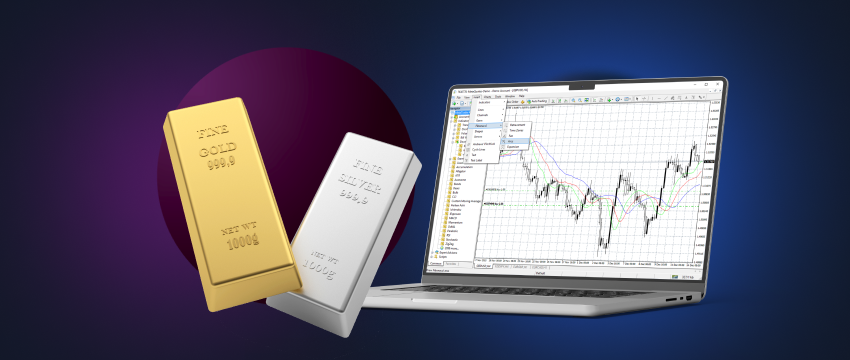
Metals Trading with T4Trade
Traders worldwide seek out T4Trade for the flexible CFD trading experience it offers, fast withdrawals and deposits, flexible leverage, and quick execution. A multi-lingual support team is also on hand 24/5 via email, telephone, or live chat to help traders across the globe with any queries they might have. T4Trade traders can also choose from multiple accounts, each one catering to the needs of different types of traders, regardless of expertise.
CFD metals trading with T4Trade also means you have the opportunity to diversify your investment portfolio with different precious metals, experience high liquidity due to high trading volumes of certain metals (e.g. gold), competitive spreads, and more.
Penafian: This material is for general informational and educational purposes only and should not be considered investment advice or an investment recommendation. T4Trade is not responsible for any data provided by third parties referenced or hyperlinked in this communication.
